
19 minute read
AT THE BAR — Signature Sangrias
Signature SANGRIAS
CREATIVE TOUCHES TAKE WINE + FRUIT BEYOND RED AND WHITE
| BY ELYSE GLICKMAN | Through the ages, wine has been paired with various ingredients to appeal to the tastes of the times. That spirit of invention continues today, as new adaptations of sangria — Spain’s versatile wine + fruit libation — emerge on the American bar scene.
While sangria, in some form, has been around for centuries, it didn’t hit the American mainstream until 1964, when it was served in the Spanish Pavilion at the World’s Fair in New York City. Over a half century later, bars and restaurants inspired by Spain, Mexico and Latin America continue to push sangria into the future by tuning into the tastes of today’s customers, one satisfying sip at a time.
IT’S ALL ABOUT THE BASE
Wine, of course, is the main ingredient in any sangria. Choosing the right kind of wine to use takes careful thought, according to bar pros.
Chris Zadie, sommelier for 8182 Management Group’s Mas Por Favor in Las Vegas and its soon-to-open La Neta Cocina y Lounge in Downtown Summerlin, Nevada, opts for a California sauvignon blanc for La Neta’s Culo Blanco white sangria. That wine, he explains, is aged in oak barrels and steel tanks, setting it apart from New Zealand sauvignon blancs, which are aged primarily in steel — a process that may make the flavor too “bright” and overwhelm the other ingredients in the sangria. The “oak-y” notes in the California wine, he explains, lend themselves better to the white peach and clementine slices and raspberries that will be steeped in the mix. For the red sangria he is planning for fall, Zadie is leaning toward an old vine American Zinfandel, which has more residual sugar and a full-bodied, smoky flavor, like something you’d find in a classic malbec.
Cassandra Pease, beverage director at Hermanito in West Los Angeles, agrees it is important to carefully consider the type of wine that will form the base of any sangria. That decision is often season-based.
“With preparing summer sangrias, you definitely want sweet and fruit-forward reds without a lot of tannins, like a garnacha or tempranillo, and crisp slightly acidic whites, like a pinot grigio or a sauvignon blanc,” says Pease, whose fall plans call for a sangria made with pinot noir.
“During summertime, a white wine sangria plays up bright citrusy flavors, while rosé wine sangria with fresh strawberries and mint is delightful,” says Michael Bowlds, general manager at Santa Barbara, California’s Loquita. “During the colder winter months, a red wine-based sangria harmonizes with darker flavors like warm baking spices along with spirits and fruits with similar notes.”
Creative mixologists also are adding other liquors and liqueurs to enhance basic sangria recipes.
Zadie’s Culo Blanco, for example, includes a half-ounce of Grand Marnier per cocktail, while tequila and
SANGRIA “DON’TS”
• Don’t use out-of-season, off-peak fruit.
• Don’t use fruit that will dramatically change sangria’s flavor or texture. Some fruits just don’t mix well with wine. Justin
Cantanese, general manager at Borracha Mexican Cantina at
Green Valley Ranch in Henderson, Nevada, warns that fleshy fruit like bananas turn sangria cloudy or give it an unpleasant “smoothie” texture. And
Chris Zadie, sommelier for 8182
Management Group’s Mas Por
Favor in Las Vegas and La Neta
Cocina y Lounge in Downtown
Summerlin, Nevada, finds that tart Asian fruits like lychee and dragon fruit may create an overbearing flavor profile when paired with certain white wines.
• Don’t skimp on the wine! Using cheap, lower-quality wine or leftover wine that’s been opened or left in the refrigerator too long is a common mistake mixologists make, according to Cantanese.
• Don’t over-ice. Alexandre Tessier, director of sales and marketing at The W Montreal, says using too much ice can water down important nuances of the ingredients.
• Don’t rely too heavily on fruit juices for flavor. Adding too much fruit juice dilutes flavors of the wine and alcohol and imparts too much sweetness,
Tessier says. whiskey are the additions of choice at Borracha Mexican Cantina at Green Valley Ranch in Henderson, Nevada, and Mi Casa Grill Cantina in Las Vegas.
“With sangria, bars and restaurants known for innovation are using tequila as well as whiskey to create a more complex flavor profile,” reports Justin Catanese, general manager at Borracha. “While I have seen variations with vodka or gin as a base, any bartender looking to reel in an aficionado-type of customer is moving towards adventurous recipes with tequila or whiskey.”
According to Gina Garcia, general manager at Mi Casa, the restaurant’s signature Sangarita — a sangria-Margarita hybrid of merlot or cabernet, margarita mix and tequila, blended with ice — has always featured a shot of tequila. But it’s being tweaked to move away from mild silver tequilas and towards tequilas or mezcal with smokier notes, similar to a bourbon. “For July, we’re going to have a citrus tequila sangria for one of our specials,” Garcia says.
“Accessibility to new products has allowed for a lot more creativity,” observes Bowlds, whose sangria recipes incorporate products like allspice liqueur and spiced pear brandy. “Other liqueurs that have become more accessible, such as suze or chartreuse, really allow us to creatively spice up the traditional sangria,” Bowlds says.
“Using other spirits in your sangria introduces an exciting new flavor profile,” says Pease, who chose apricot brandy for the restaurant’s summertime special, Red Apricot Sangria. “Apricots are in season right now, and the flavor profile complements the fruit — Mandarin oranges, peaches, and pineapple — that I chose for this particular recipe.”
Los Angeles’ Salazar differentiates its Sangria Roja with Jardesca Red Aperitiva, an infused low-alcohol aperitif blending ten botanicals, including tangerine, ginger and cardamom. The base is a blend of three artisanal California wines, with zinfadel at its heart.
At W Montreal, the “Remastered Sangrias” menu — developed in collaboration with mixologists from the hotel group’s most popular destinations, including Ibiza — features the W Ibiza White Sangria made with Bacardi Superior, Malibu, Cointreau and pineapple juice, and the W Ibiza Red Sangria, kicked up a notch with Peach Schnapps, St-Germain ginger
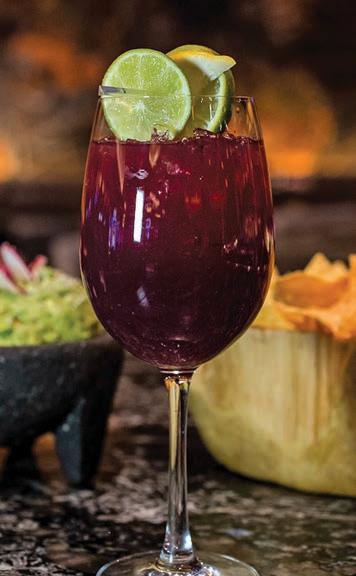
Borracha Mexican Cantina’s Sangria Roja
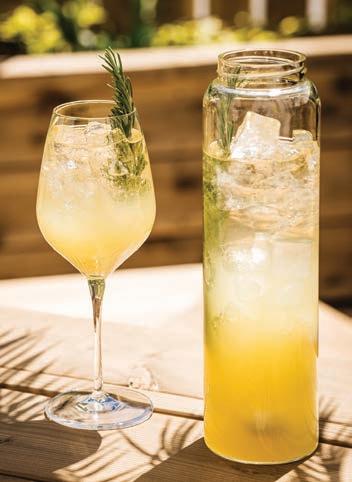
W Ibiza White Sangria PHOTO COURTESY OF W MONTREAL

WHY SANGRIA?
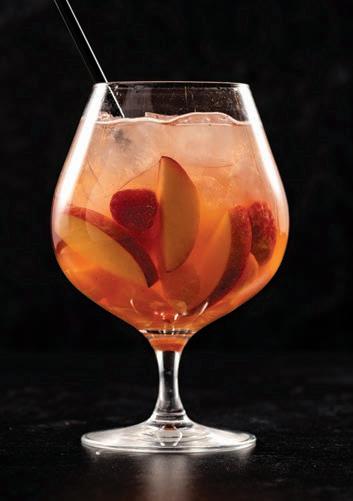
According to Gina Garcia, general manager at Mi Casa Grill Cantina in Las Vegas, when a group can’t decide on the kind of wine to order, a red or white sangria can fit the bill.
Justin Catanese, general manager at Borracha Mexican Cantina at Green Valley Ranch in Henderson, Nevada, observes sangria has a way of bridging two types of customers — those who prefer cocktails and those who exclusively opt for wine — while also being versatile enough to harmonize with a variety of dishes. “This gives sangria a certain staying power,” he says. “It also parallels an evolution in modern mixology, pushing customers to gravitate towards things with fresh ingredients and flavors.”
Chris Zadie, sommelier for 8182 Management Group’s Mas Por Favor in Las Vegas and La Neta Cocina y Lounge in Downtown Summerlin, Nevada, agrees that sangrias can help boost bar sales. “If you’re a wine drinker and you walk into a venue that’s predominantly cocktail-driven, sangria is an easy go-to,” says Zadie. “As traditional versions of sangria are very sweet, it appeals to the average American palate, which leans towards sweeter flavors.”
“Sangria provides a great introduction to wine, particularly for younger consumers,” says Kassandra McPherson of La Diosa Winery in Lubbock, Texas. “The approachability of fruity flavors and lighter body profile has been a wonderful way to provide that stepping-stone to dry red wine for many folks who previously felt they didn’t like red wine or were unsure where to start when it comes to enjoying red wines.”
Mi Casa Grill Cantina’s Sangria Trio PHOTO BY EUGENE DELA CRUZ, ONESEVEN AGENCY La Neta’s Culo Blanco Sangria

liqueur, prosecco, grapefruit juice and mixed berries.
So, what’s the secret to enhancing a sangria base?
“My best advice is to find a really good base recipe, then slowly tweak it by adding fun ingredients and increasing or decreasing what you put in to produce a really balanced and delicious product,” Bowlds says. “I have seen excellent variations of this using wines fermented from other fruits, such as sake, cherry or plum. That said, the advantage of using grape wines is that they are typically drier and less sweet, which allows one to carefully figure in other liqueurs and juices and then adjust sweetness level with judicious use of simple syrup.”
FINE-TUNING WITH FRUIT
Once the base is in place, finding the fruit, herbs and spices that will bring the best out of the wine and spirits is the next step. The one thing the pros agree on is that fruit needs to be fresh and at peak flavor.
“During the summer, we are using stone fruits and taking advantage of their availability,” says Garcia. “In the fall and winter months, we like to use mulling spices, such as cinnamon and cloves, and to use simple syrups with these spices that we make in-house.
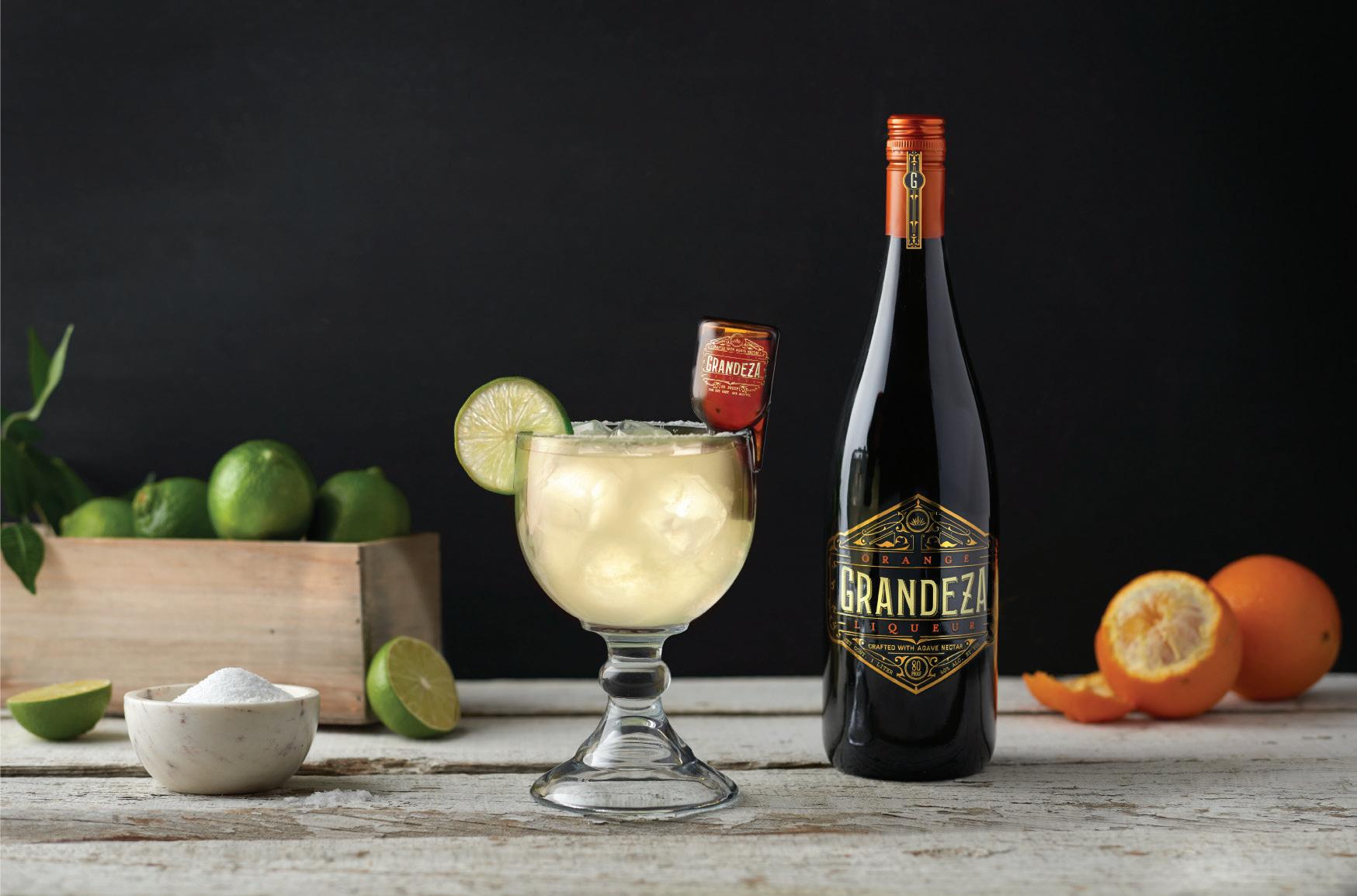
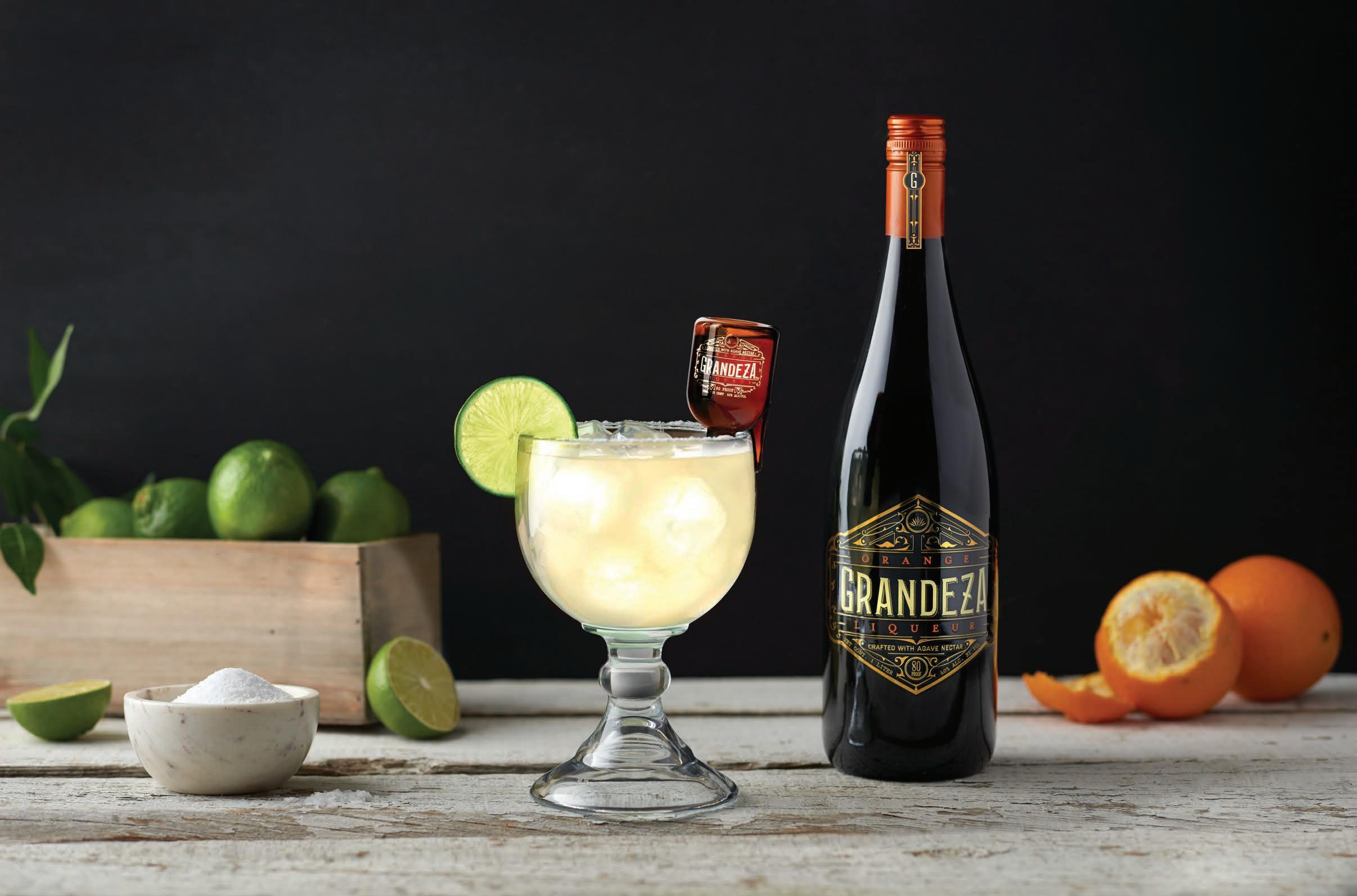
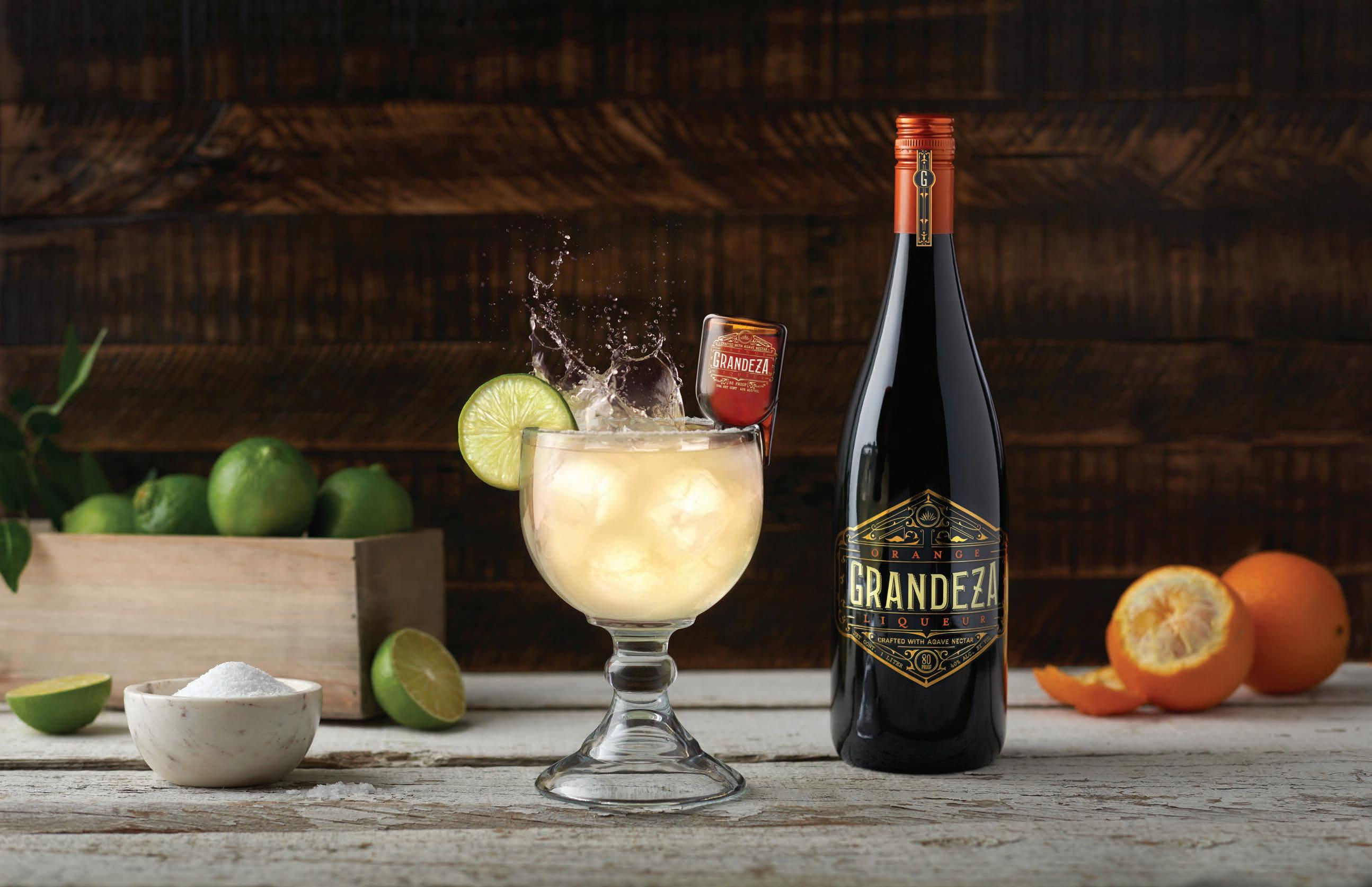

Loquita’s Sangria Roja
PHOTO BY ROB STARK

While we look at fruit in terms of what happens to be in season, we are open to bringing in fresh herbs, bitters, and other cocktail ‘condiments’ to develop new flavor profiles. Perhaps we can do a white sangria that has a bit of a mojito influence, and last fall, we played with rosemary, spices and herbs.”
Borracha bartender Hayley Rose Proenza notes that while oranges, lemons and other citrus are available year-round, the team reaches for strawberries and summer fruits when they are at their peak. “Other times of year, we like certain herbs-fruit combinations such as watermelon and basil, or orange and anise that add something to certain wine varietals,” she says. “Regardless, it is so important to be sure you are changing up different fruits and herbs as the seasons change, as you will get the most flavor and best balance when they are at the peak of their ripeness.”
The one thing that never changes is that you really can’t go wrong putting your sangria spin on the menu.
“There is really something for everybody,” says Pease, who notes it is “really hard to mess up” a sangria recipe.
“You can make it boozy or light, and use so many different types of wine, spirits, and fruit,” concludes Pease. “There are so many different ways to make it, so many opportunities to be creative.”
Elyse Glickman is the At the Bar columnist for el Restaurante.
See recipes for several sangria recipes on page 54.

SANGRIA

LOS DETALLES CREATIVOS LLEVAN AL VINO Y LA FRUTA MÁS ALLÁ DEL BLANCO Y DEL TINTO
| POR ELYSE GLICKMAN | A lo largo de la historia, el vino se ha combinado con diversos elementos para satisfacer los gustos de cada época. Ese mismo espíritu inventivo continúa en la actualidad, cuando surgen nuevas adaptaciones de la sangría (la versátil bebida española de vino y fruta) en los bares de Estados Unidos.
Aunque la sangría, en alguna de sus formas, ha estado presente desde hace siglos, no llegó a Estados Unidos hasta 1964, año en que se sirvió en el Pabellón Español de la Feria Mundial de Nueva York. Tras más de medio siglo, los bares y restaurantes inspirados en España, México y América Latina siguen llevando la sangría hacia el futuro, ajustándose a los gustos de los clientes de hoy, un sorbo de satisfacción a la vez.
TODO DEPENDE DE LA BASE
El vino, naturalmente, es el ingrediente principal de cualquier sangría. Según los profesionales de la hostelería, la elección del tipo de vino correcto requiere una cuidadosa reflexión.
Chris Zadie, sumiller del restaurante Mas Por Favor de 8182 Management Group en Las Vegas y de La Neta Cocina y Lounge, que pronto abrirá sus puertas en el centro de Summerlin (Nevada), opta por un sauvignon blanc de California para la sangría blanca Culo Blanco de La Neta. Ese vino, explica, se envejece en barricas de roble y tanques de acero, lo que lo distingue de los sauvignon blancs de Nueva Zelanda, que se envejecen principalmente en acero, un proceso que podría hacer que el sabor fuera demasiado “brillante” y abrumara a los demás ingredientes de la sangría. Las notas de “roble” del vino californiano, según explica, se adaptan mejor a las rodajas de melocotón blanco y clementina y a las frambuesas que se incorporarán a la mezcla. En cuanto a la sangría roja que está planeando para el otoño, Zadie se inclina por un zinfandel americano de viñas viejas, con más azúcar residual y un sabor ahumado y con mucho cuerpo, como el de un malbec clásico.
Cassandra Pease, directora de bebidas de Hermanito, en el oeste de Los Ángeles, coincide en que es importante considerar con cuidado el tipo de vino que formará la base de cualquier sangría. Esta decisión suele basarse en la temporada.
“Cuando se preparan sangrías de verano, sin duda se quieren tintos dulces y afrutados sin muchos taninos, como una garnacha o un tempranillo, y blancos crujientes y ligeramente ácidos, como un pinot grigio o un sauvignon blanc”, dice Pease, que en sus planes de otoño prevé una sangría hecha con pinot noir.
“Durante el periodo veraniego, una sangría de vino blanco realza los sab-
LO QUE NO SE DEBE HACER CON LA SANGRIA
• No use fruta fuera de temporada o temporada baja.
• No utilice fruta que vaya a cambiar drásticamente el sabor o la textura de la sangría. Ciertas frutas no combinan bien con el vino. Justin Cantanese, director general de Borracha Mexican Cantina en Green Valley Ranch, en
Henderson, Nevada, señala que las frutas carnosas, tales como las bananas, enturbian la sangría o le dan una desagradable textura de “batido”. Y Chris Zadie, sumiller de
Mas Por Favor, de 8182 Management Group, en Las Vegas, y de La Neta Cocina y Lounge, en el centro de Summerlin (Nevada), considera que las frutas asiáticas ácidas, como el lichi y la fruta del dragón, podrían crear un perfil de sabor excesivo cuando se combinan con determinados vinos blancos. • No se debe escatimar en el vino. Según Cantanese, utilizar un vino barato y de baja calidad o un vino sobrante que se ha abierto o se dejó en el frigorífico durante demasiado tiempo es un error común que cometen los mixólogos.
• No te pases con el hielo. Alexandre Tessier, director de ventas y marketing de The W Montreal, dice que usar demasiado hielo puede atenuar los matices importantes de los ingredientes.
• No confíes mucho en los zumos de fruta para potenciar el sabor. Añadir demasiados zumos de fruta diluye los sabores del vino y el alcohol y aporta demasiado dulzor, dice Tessier.
ores cítricos brillantes, mientras que la sangría de vino rosado con fresas frescas y menta es deliciosa”, dice Michael Bowlds, director general de Loquita, en Santa Bárbara (California). “Durante los meses más fríos del invierno, una sangría a base de vino tinto armoniza con sabores más oscuros, como las cálidas especias para hornear, junto con licores y frutas de notas similares”.
Los mixólogos más creativos añaden también otros licores para perfeccionar las recetas básicas de sangría. El Culo Blanco de Zadie, por ejemplo, incorpora media onza de Grand Marnier por cóctel, mientras que el tequila y el whisky son las combinaciones preferidas en la cantina mexicana Borracha de Green Valley Ranch, en Henderson (Nevada), y en la cantina Mi Casa Grill de Las Vegas. “Con la sangría, los bares y restaurantes reconocidos por su innovación utilizan tanto el tequila como el whisky para crear un perfil de sabor más complejo”, informa Justin Catanese, director general de Borracha. “Si bien he visto variaciones con vodka o ginebra como base, cualquier barman que busque captar un cliente de tipo aficionado se inclina por recetas aventuradas con tequila o whisky”.
Gina García, directora general de Mi Casa, afirma que la Sangarita del restaurante (“Sangría-Margarita”, un híbrido de Merlot o Cabernet, mezcla de margarita y tequila, mezclado con hielo) siempre ha incluido un chupito de tequila. Pero se está modificando para dejar atrás los tequilas plateados suaves y acercarse a tequilas o mezcales más ahumados, parecidos al bourbon. “En julio, una de nuestras especialidades será una sangría de tequila con cítricos”, dice García.
“La posibilidad de acceder a nuevos productos permite mucha más flexibilidad”, observa Bowlds, en cuyas recetas de sangría se incorporan productos como el licor de pimienta de Jamaica
W Ibiza White Sangria FOTO CORTESÍA DE W MONTREAL
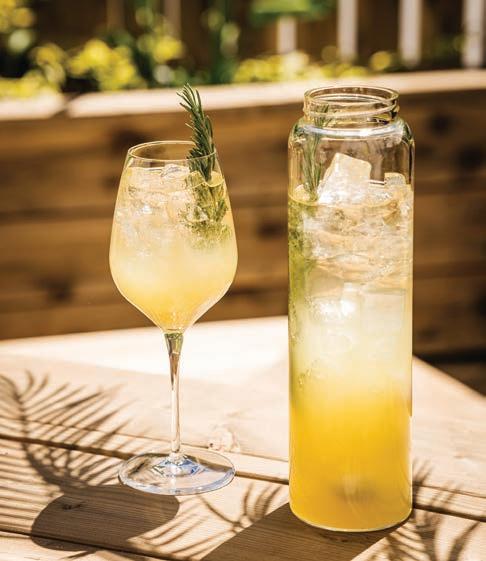

y el brandy de pera con especias. “Otros licores que se han vuelto más accesibles, como el suze o el chartreuse, nos dan la posibilidad de condimentar de forma creativa la sangría tradicional”, dice Bowlds. “Utilizar otros licores en la sangría aporta un nuevo y excitante perfil de sabor”, dice Pease, quien eligió el brandy de albaricoque para la sangría de verano del restaurante, Red Apricot Sangria. “ Los albaricoques están en temporada en este momento, y el perfil de sabor complementa la fruta, naranjas mandarinas, melocotones y piña, que escogí para esta receta en particular”.
Salazar, de Los Ángeles, diferencia su Sangría Roja con Jardesca Red Aperitiva, un licor de aperitivo de baja gradación alcohólica que mezcla diez ingredientes naturales, como la mandarina, el jengibre y el cardamomo. La base consiste en una mezcla de tres vinos artesanales californianos, con el zinfadel en el centro. En el W Montreal, la carta de “Sangrías Remasterizadas”, desarrollada en colaboración con los mixólogos de los principales destinos del grupo hotelero, entre ellos Ibiza, incluye la Sangría Blanca W Ibiza, preparada con Bacardi Superior, Malibú, Cointreau y zumo de piña, y la Sangría Roja W Ibiza, que se ha mejorado con aguardiente de melocotón, licor de jengibre St-Germain, prosecco, zumo de pomelo y mezcla de bayas.
¿POR QUÉ LA SANGRÍA?
Según Gina García, directora general de Mi Casa Grill Cantina, en Las Vegas, cuando un grupo no puede decidirse por el tipo de vino que va a pedir, lo mejor es una sangría roja o blanca.
Justin Catanese, director general de Borracha Mexican Cantina at Green Valley Ranch, en Henderson (Nevada), afirma que la sangría tiene la virtud de unir dos tipos de clientes, “los que prefieren los cócteles” y “los que optan
Tres Sangrias de Mi Casa Grill Cantina FOTO POR EUGENE DELA CRUZ, ONESEVEN AGENCY exclusivamente por el vino”, y, al mismo tiempo, es lo suficientemente versátil como para combinar con una gran variedad de platos. “Esto hace que la sangría tenga un cierto poder de permanencia”, afirma. “También es paralela a una evolución en la mixología moderna, que impulsa a los clientes a gravitar hacia productos que contienen ingredientes y sabores frescos”.
“Si usted es un bebedor de vino y entra en un lugar donde predominan los cócteles, la sangría es una opción fácil”, dice Chris Zadie, sumiller del Mas Por Favor de 8182 Management Group en Las Vegas y de La Neta Cocina y Lounge en el centro de Summerlin, Nevada. “Como las versiones tradicionales de la sangría son muy dulces, atrae al público americano promedio, que se inclina por los sabores más dulces”. “La sangría es una excelente introducción al vino, sobre todo para los consumidores más jóvenes”, afirma Kassandra McPherson, de la bodega La Diosa de Lubbock (Texas). “La accesibilidad de los sabores afrutados y el cuerpo más ligero ha sido una forma maravillosa de ofrecer ese trampolín hacia el vino tinto seco a muchas personas que antes sentían que no les gustaba el vino tinto o no estaban seguras de por dónde empezar a la hora de disfrutar de los vinos tintos”.
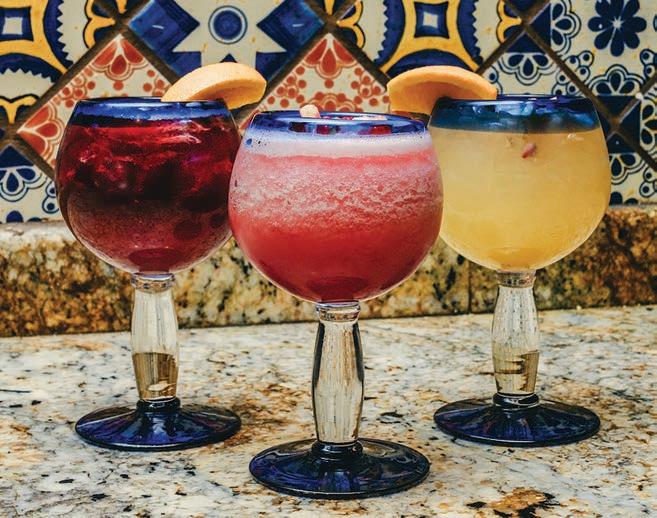
¿CUÁL ES EL SECRETO PARA MEJORAR LA BASE DE LA SANGRÍA?
“El mejor consejo que puedo dar es encontrar una receta base realmente buena y, a partir de ahí, retocarla poco a poco agregando ingredientes divertidos y aumentando o disminuyendo lo que se pone para obtener un producto realmente equilibrado y delicioso”, dice Bowlds. “He visto excelentes variaciones de este tipo utilizando vinos fermentados a partir de otras frutas, como sake, cereza o ciruela. La ventaja de utilizar vinos de uva es que suelen ser más secos y menos dulces, lo que permite introducir cuidadosamente otros licores y zumos y ajustar el nivel de dulzor con un uso juicioso del sirope simple”.
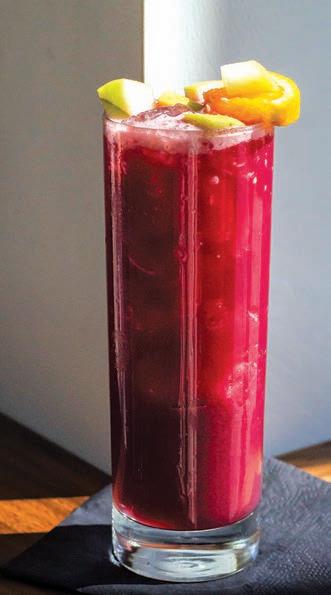
AFINAR CON LA FRUTA
Una vez establecida la base, el paso siguiente es encontrar la fruta, las hierbas y especias que sacarán lo mejor del vino y los licores. En lo que coinciden todos los profesionales es en que la fruta debe ser fresca y estar en su punto óptimo de sabor.
“Durante los meses de verano, utilizamos frutas de hueso y nos aprovechamos de su disponibilidad”, dice García. “En los meses de otoño e invierno, preferimos utilizar especias para calentar, como canela y clavos, y con estas especias, utilizar jarabes sencillos que elaboramos nosotros mismos. Aunque consideramos la fruta en función de la temporada, estamos abiertos a traer hierbas frescas, amargos y otros ‘condimentos’ de cóctel para desarrollar nuevos perfiles de sabor. Quizás podemos hacer una sangría blanca que tenga un poco de influencia del mojito, e incluso el otoño pasado jugamos con romero, especias y hierbas”. La barman de Borracha, Hayley Rose Proenza, observa que, aunque las naranjas, los limones y otros cítricos están disponibles todo el año, el personal opta por las fresas y las frutas de verano cuando están en su mejor momento. “En otras épocas del año, preferimos ciertas combinaciones de hierbas y frutas, como sandía y albahaca, o naranja y anís, que aportan algo a ciertas variedades de vino”, dice. “En cualquier caso, es importante asegurarse de que se cambian las frutas y las hierbas a medida que las estaciones cambian, ya que se obtiene el máximo sabor y el mejor equilibrio cuando están en el punto óptimo de maduración”.
Lo único que nunca varía es que no te puedes equivocar al darle un giro a la sangría en el menú.
“Ciertamente hay algo para todo el mundo”, dice Pease, que señala que es “muy difícil estropear” una receta de sangría.
“Se puede hacer con mucho alcohol o con poco, y utilizar diferentes tipos de vino, licores y frutas”, concluye Pease. “Hay tantas formas diferentes de hacerla y muchas oportunidades de ser creativo”.
Sangria Roja de Borracha Mexican Cantina Sangria Roja de Loquita

FOTO POR ROB STARK
Vea las recetas de varias sangrías en la página 54.






